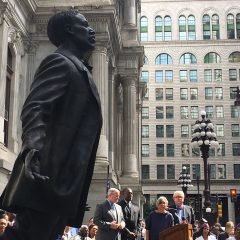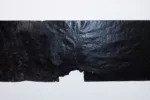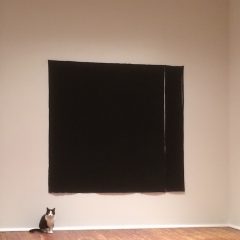This is part 2 of a 2 part post. Part 1 is about the talk delivered by show juror Joao Ribas.
Ribas’ choices for the Arcadia Works on Paper exhibit raise issues of sharing, reproducibility and loss of copyright control. They raise disturbing questions about the value of all art at a time when works on paper have never been more highly valued.
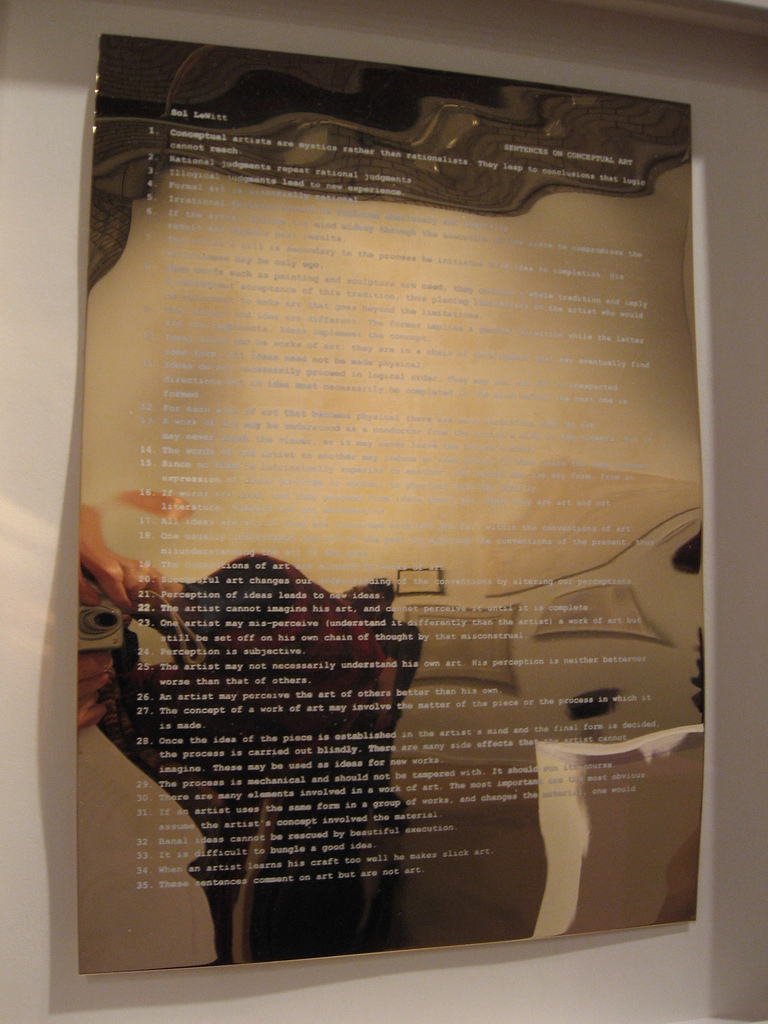
Ribas first shots across the bow, the first pieces in front of you as you walk into the gallery, are Michael Davis Carter’s gator, a tissue paper piece that appropriates the LaCoste alligator logo, and James Johnson’s 14K Sentences on Conceptual Art, a 14K gold sheet of paper on which is silkscreened an appropriation of Sol Lewitt’s Sentences on Contemporary Art. The reflective quality of the material and the art historical appropriation serve as a conceptual treatise on material value and creative value–Lewitt’s creative capital, Johnson’s creative capital, the means of production that crosses lines between the handmade and machine (computer) made and printed.
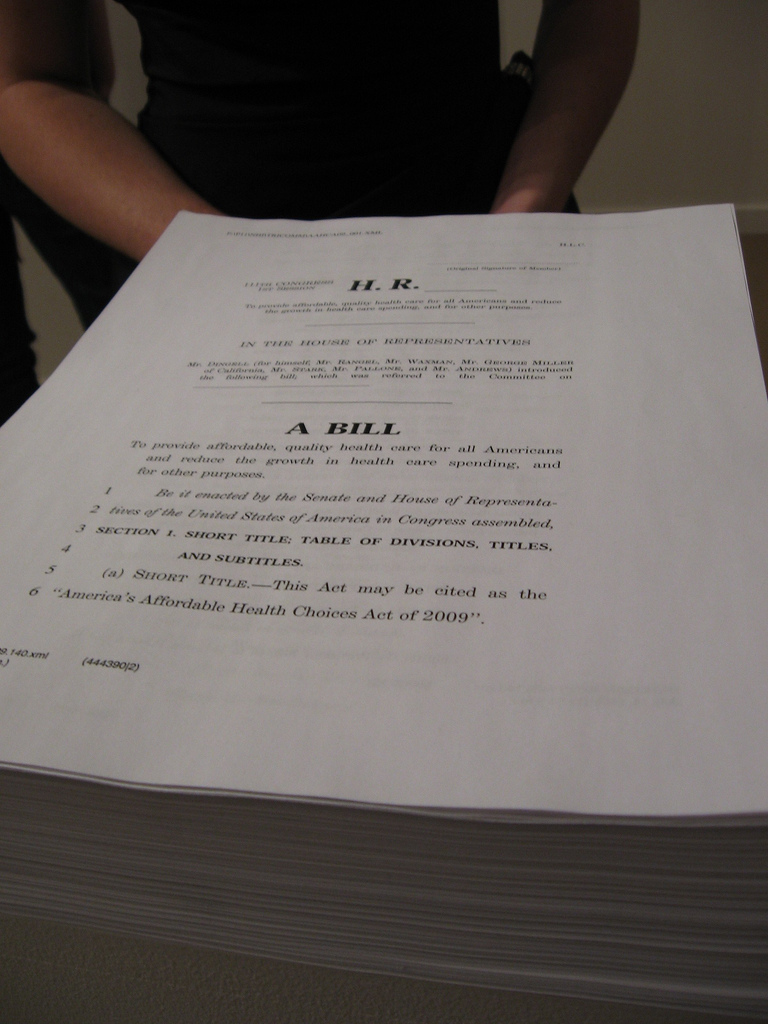
In that same front room, Gabriel Boyce and Preston Link offer on a pedestal another conceptual work–Health Care Bill, three inches of Congressional bureaucratese downloaded from the internet and stacked on a pedestal, the work representing value beyond the ability of most of us to calculate. I found it especially amusing that the gallery needed a young woman to stand guard over this particular piece, to make sure no one commandeered a piece of paper from the bill, a piece of paper of questionable value without the context! And

Bruce Campbell’s Directional Drawing, with words scrawled over a paper incised with a Frank Stella geometric shape–another art-historical appropriation–brings into question 1968 aesthetics and value at the same time that Campbell appropriates and incorporates into his own value system a piece of Stella’s creative capital!
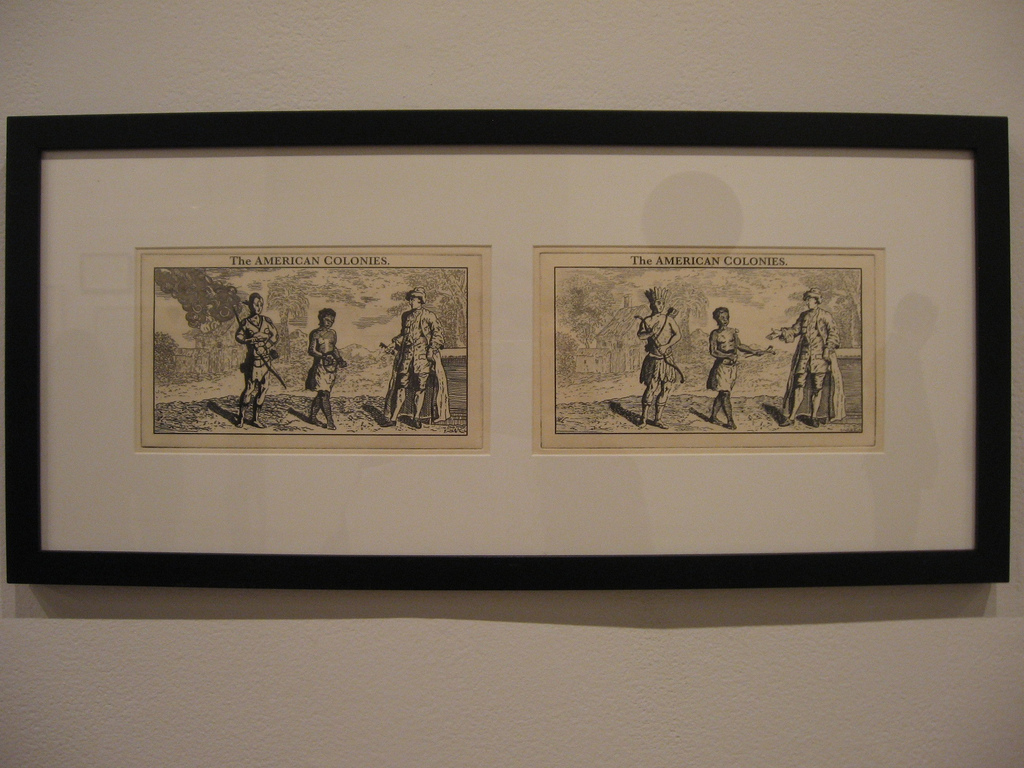
Robert T. Pannell and Pernot Hudson pull the rug out from the assumptions of our common culture–oy, those Indians got such a bad deal, speaking of value. Hudson’s print/drawing of a sheriff’s badge, Samburg’s Finest, drips with irony.
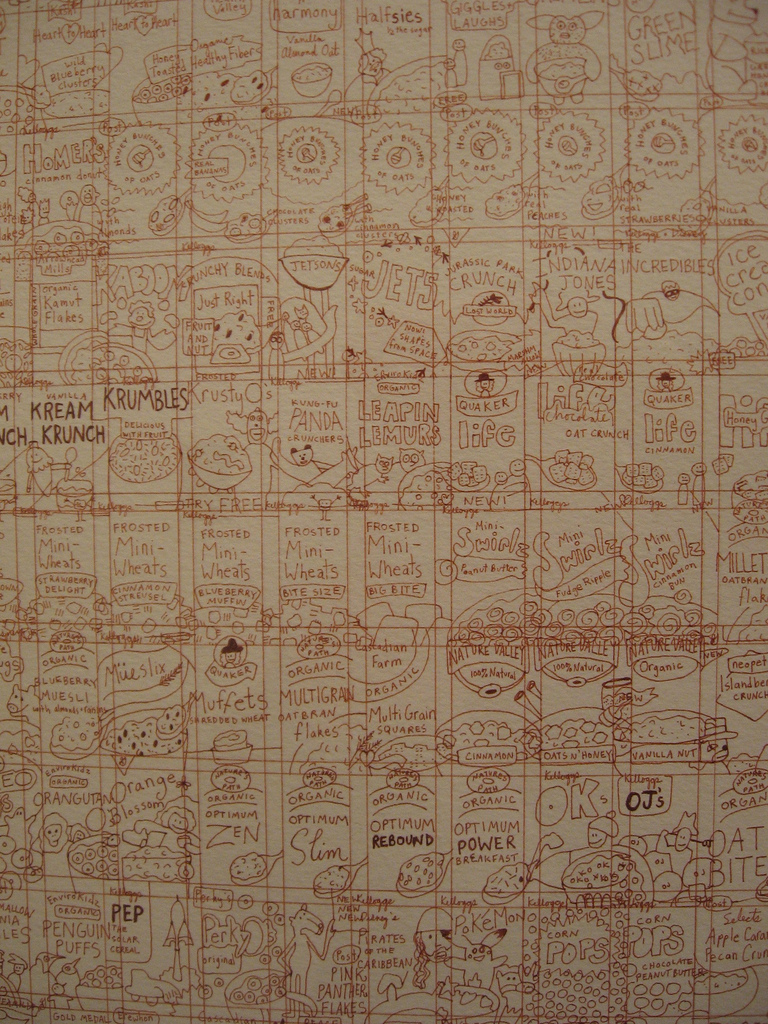
The counterpoise to all these rather cynical meditations on value is a wall of five drawings that range from contemporary deadpan to doodly to an old-fashioned elegance of line–all of them raising questions of aesthetics. In this group, Mia Rosenthal’s cereal box grid drawing, an obsessive Roz Chast-like reuse and filtering of mass produced advertising, most pointedly continues the conversation about authorship and value (this and Leah Bailis’ Corner were the only works in the show I had seen before, but I was happy to revisit both of them).
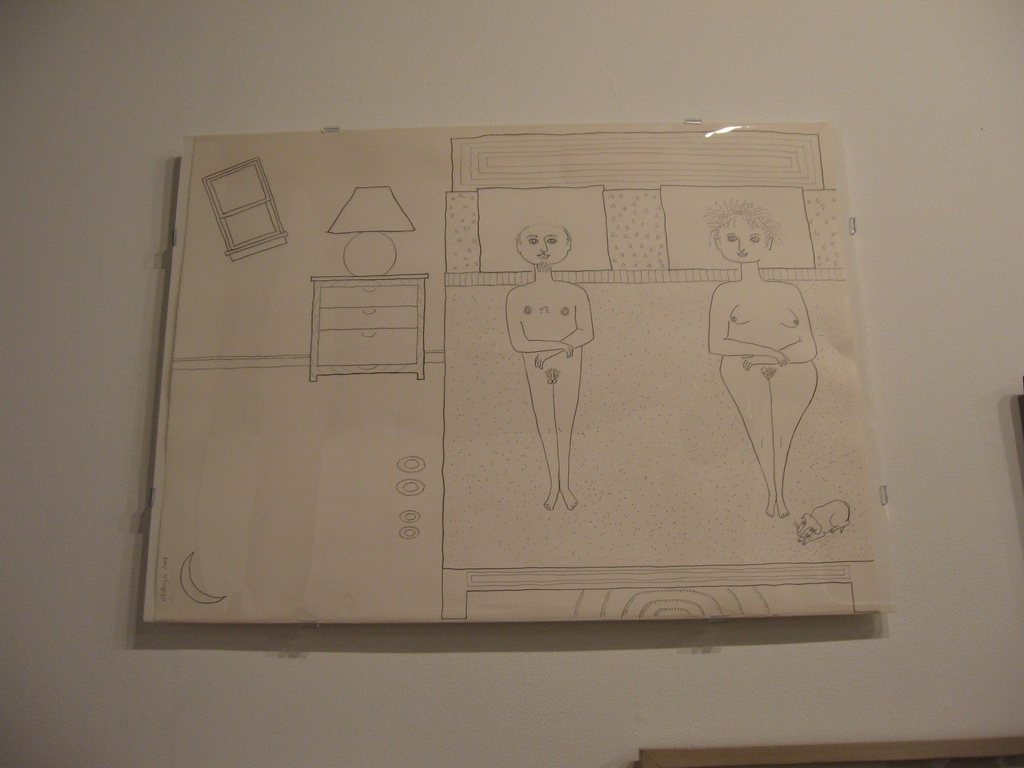
The others in that group on the wall with Cereal… suggest that cultural fashion and value are fickle, from Andrea Beizer’s Three in Bed, which passes for a contemporary cartoon, to John Costanza’s What did you do to the Booze Hickey? #2, which passes for a mid-20th-century one. In the mix of shifting tastes–Erika Mayer’s Knapsack Nation and Dino Vasquez Gargas Positivas.
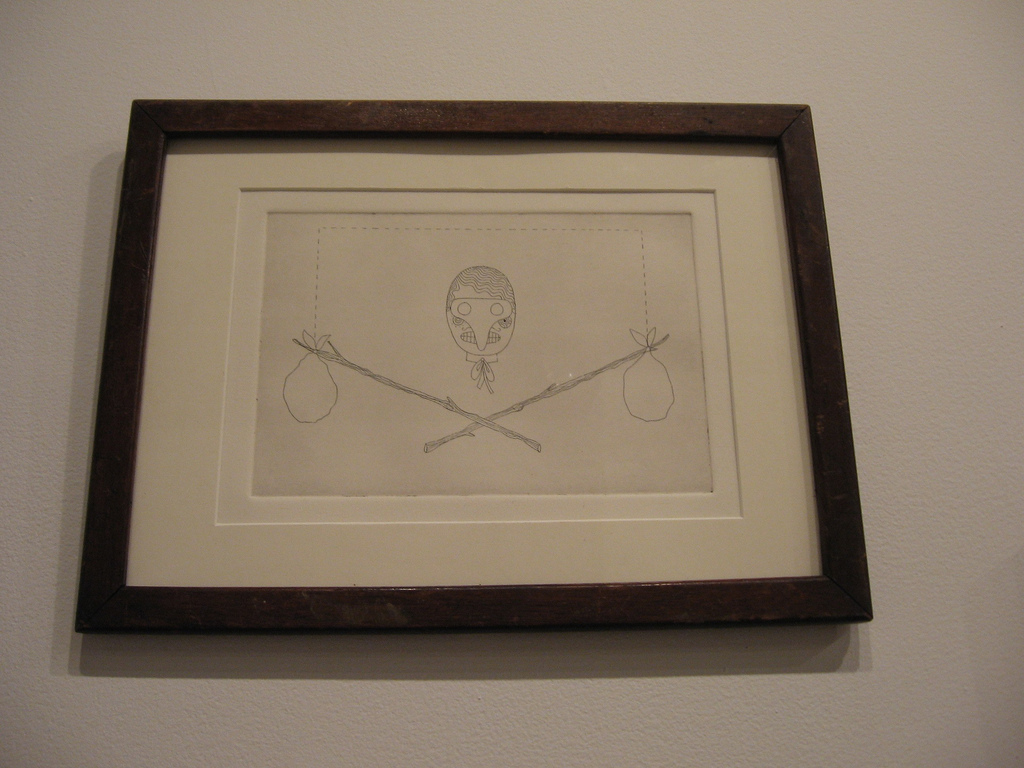
Turns out there’s nothing in this show that doesn’t raise these questions about value and aesthetics. But the conversation about value is the more interesting and edgy of the two.
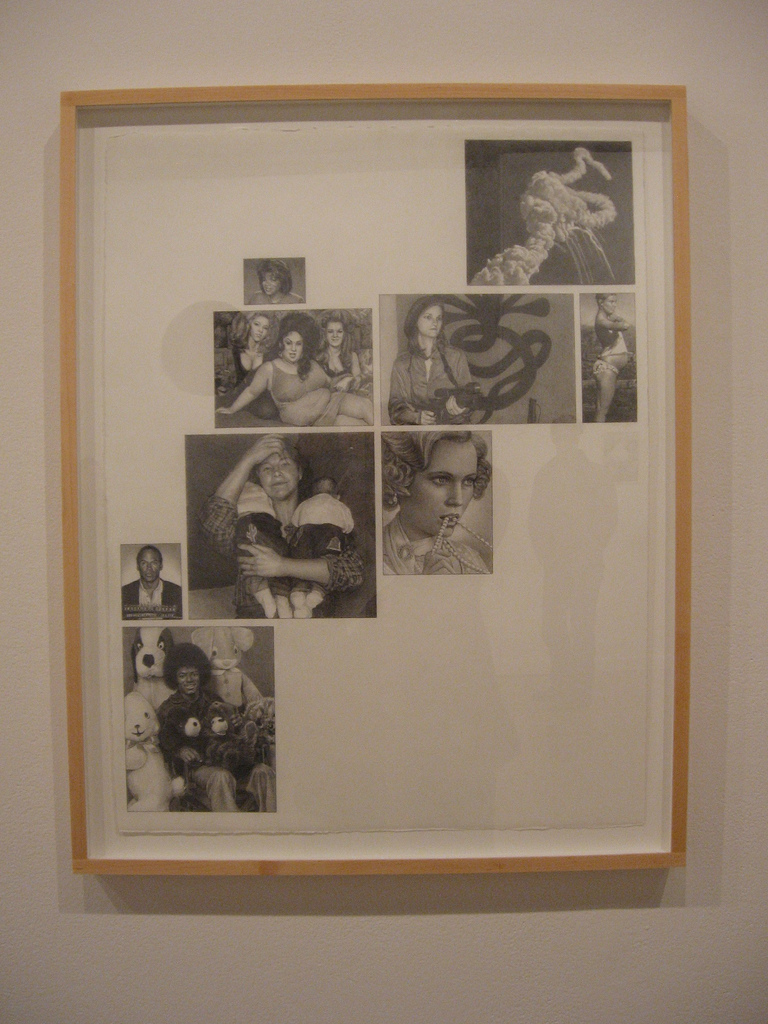
As the show moves into the back room, a number of works copy popular culture images, using hand-reproduction methods that reinterpret the original values. I especially loved Fay Stanford’s Indigenous Princess, a highly unlikely image that turns the sentimentality of kitsch into a wild thing. Closer to my point about copying are Kristina Martin’s movie still and Mark Stockton’s Composition 3, the latter a drawn clipboard of media-celeb images. Matt Neff’s prints may valorize or criticize the Wu Tang Clan. He doesn’t give enough away for me to guess, but he’s playing in the same pond of appropriated pop culture.
That art work appropriating manufactured imagery is so widespread surely shows how far behind the courts are in handling the phenomenon of Shepard Fairey’s reuse of an AP photographer’s Obama portrait. The contentiousness about Fairey’s authorship, ironically, raises the value of the hand work, cheaply reproduced and sold over the internet, and the value of the photo, even more cheaply reproduced and sold over the wire services.
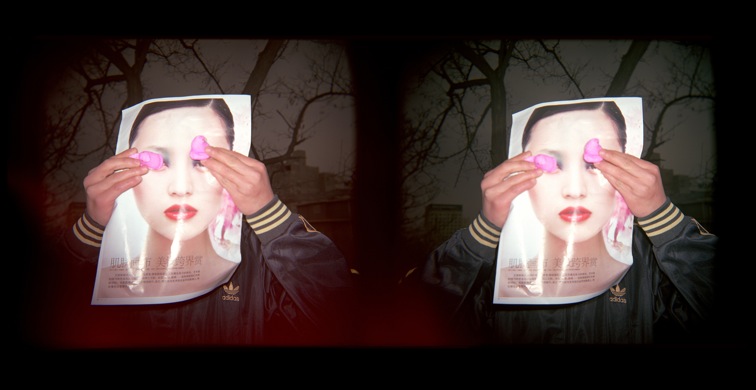
Gabriel Martinez Untitled (Peking Ducks), “Pink” photo raises so many issues of identity, ownership, advertising, beauty, cultural hegemony, gender, duplication, yadda yadda yadda that it leaves me breathless. Martinez took the photo with a Holga camera in a gay pick-up park in Peking. He asked the subject to pose for him with pink Peeps ducks serving as a mask, but the subject, afraid of being recognized, tore out a magazine ad and covered his face with the advertising image of a woman’s face, and covered her unseeing eyes with the Peeps. The clash of cultures is played out here in numerous ways, especially with the Western photographer and his Western Peeps and the Western influenced Eastern advertising image. Not to mention, on the love front, that peeps will be peeps. Amazing!!!
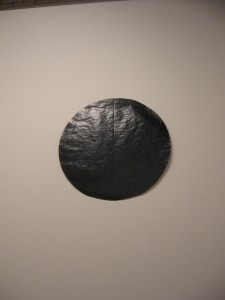
Quentin Morris, who is a perennial presence in the Works on Paper show, expressed disappointment during the opening because his black circle was hung high on the wall like on ominous moon threatening the art cosmos. In a way he’s right. His work’s meaning got highjacked by the curator for his own purposes! But even when hanging at the normal height, the piece serves as an elegant question mark. Is it reproducible? Depends on who you ask. It is a philosophical conundrum for its refusal to behave like an ordinary drawing or declare its value in quantifiable terms.
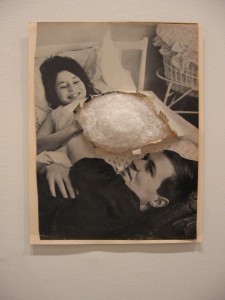
Speaking of drawings, Hannah Heffner’s Baby Bubble is also slippery. The baby bump is bubble wrap and any sense of transcendent birth is completely undermined by the deliberate crappiness of the material inserted in the cut (old-fashioned) image, a page from a magazine. When I was in the gallery, I was sure the page was a hand-made reproduction. Now, as I look at the picture, I am not so sure. The action of the man’s hand becomes a giant question with the intervention of the bubblewrap. This was arguably the riskiest piece in the exhibit!
On the surface, the show had a tremendous respect for small work and for drawing and draftsmanship and craftsmanship and art history. Although gray, black and white and conservative on the surface, underneath, the show is slippery.If it really is ushering the end of originality and the end of handmade in a world of infinite reproduction, all of this writing is about a bunch of wildly overvalued work–except for that sheet of gold. I don’t buy it–yet.
Here’s the complete list of who’s in the show:
Leah Bailis, Andrea Beizer, Gabriel Boyce & Preston Link, Bruce Campbell, John Costanza, Michael Davis Carter, Hannah Heffner, Pernot Hudson, James Johnson, Sebastien Leclercq, Erika Mayer, Gabriel Martinez, Kristina Martino, Quentin Morris, Matt Neff, Robert T. Pannell, Mia Rosenthal, Fay Stanford, Mark Stockton, Judith Taylor, and Dino Vasquez.
The Arcadia Works on Paper 2009 show runs to Dec. 21.



